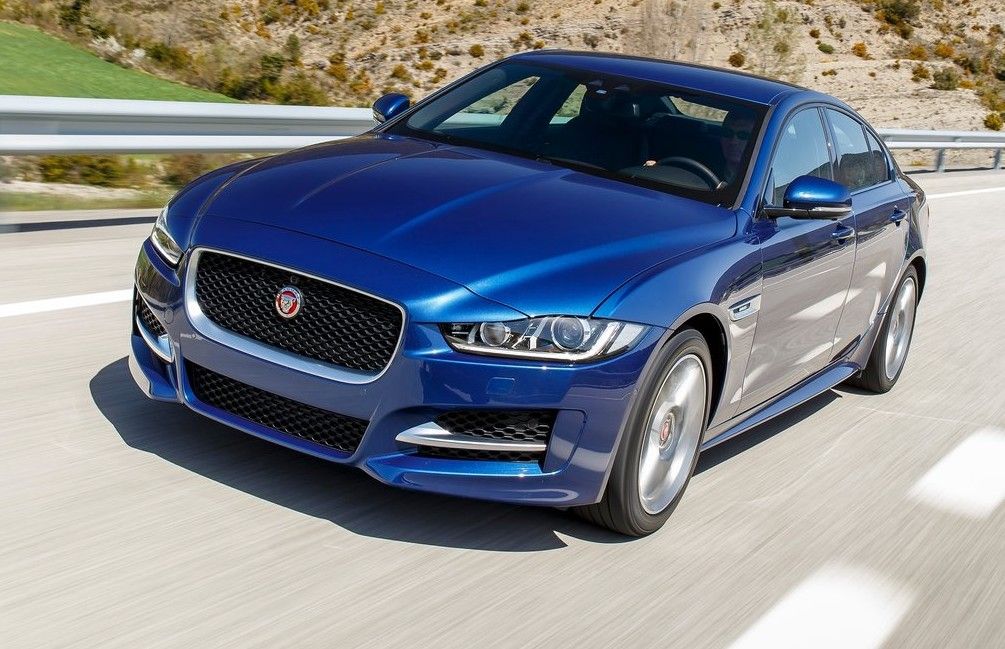Legacy Carried Forward
Modified On Sep 27, 2012 09:07 AM By Rahul
- Write a comment

Continuing with the legacy of the C, D and E-TYPE; Jaguar has unveiled the new F-TYPE to the world at the Paris Motor Show. We were midst the lucky ones who acquired the opportunity to see the sports car in skin and attend its special technical briefing.
The F-Type is a direct competition to the Porsche 911, and currently is the only sports car in the Jaguar family. The XK-range is a GT. Jaguar claims the F-Type to have driving dynamics better than their current fastest production GT, the XKR S. Read further to know more about this upcoming convertible sports car.
Design and Engineering:

There are few minor changes on the F-Type when compared to the C-X 16 that was unveiled at the Frankfurt Motor Show last year. As the pundits had expected, it is named after the E-Type. The F-Type gets a new front grille and LED cluster on the headlamps to give the Jaguars a more aggressive front stance with this DRG. The one-piece clamshell bonnet stretches back to encompass the signature Jaguar bonnet bulge and twin vents.

The F-Type has an all aluminium chassis and the extensive usage of Computer Aided Engineering programmes has helped to achieve a lighter front sub frame. The aluminium architecture has been augmented to provide the stiffest possible underpinnings for the suspension with rigidity gains of more than 30 per cent compared to any other Jaguar models. The silhouette of the F-Type makes it look lower thanks to the prominent swage line. There is also the “light catcher”, which allows the door surface to wrap around the side of the car. At the rear, the E-Type tail lamp design is retained. However, the boot closing has been changed to the conventional style to increase the practicality.

The F-Type also has more composite materials than in any previous Jaguar with crash-management structures under the sill and the boot lid constructed from high-strength plastics. As a result, the F-TYPE weighs from just 1597kg. In dimensions, it is sized between the Porsche 911 and the Boxster, while it is 115mm wider than the new-generation 911.
Interiors:

Designers in Coventry went back to the design board to delineate something that’s absolutely new, yet is Jaguar. The I.P. has been designed keeping the sporty nature of the car in mind. Being a sports car, it doesn’t get the rising gear knob. Instead, it gets a stick to shift gears to complement the natty flair.
The new touch screen system and the rotary dials, and analogue dials make the instrument cluster – very much a Jaguar sports car signature – with the numerals on the rev counter being larger and bolder than those on the speedometer to offer a reminder of the car’s purpose. A TFT screen between the two dials provides further information for the driver as necessary. A clear division exists between the driver and passenger sides of the cabin, created in the first instance by the grab handle. This sweeps down from the top of the centre console and wraps around behind the SportShift selector and Dynamic Mode buttons. The F-Type has only two seats and a boot of 200 litres.
Driving Dynamics:

F-Type S is powered by a 375bhp and 460Nm version of the 3.0-litre V6 supercharged engine. This was introduced to the 2013 model year XJ and XF saloons as 336bhp and 450Nm form. The 336bhp engine is also being offered in the F-Type. Also, a revised 5.0-litre V8 engine has been introduced that V6 shares its all-alloy construction format.
The supercharger boost control is supervised by new Bosch engine management software, optimising efficiency. The F-TYPE line-up in its V8 S avatar produces 490bhp of power and 625Nm of torque in this smaller, lighter and more agile application.
To improve the exhaust notes, the Jaguar F-Type gets the Active Exhaust. This with more than 85 iterations offers a rich sound, developing to a howling crescendo as the upper limits of the rev range are reached. In addition to the bypass valves opening under load they can be instructed to open full-time by selecting Dynamic Mode using the Jaguar Drive Controller. The V6 engines have a dual pipe, while the V8 gets a quad-pipe.
With eight, closely-stacked, sporting ratios in the ‘Quickshift’ transmission, the F-TYPE driver can fully exploit the rev range and ensure the engine remains within its optimal power band with every gearchange. The transmission has been specifically optimised by Jaguar’s engineers for a sports car application to prioritise acceleration throughout both the rev and speed range.
Jaguar claims to have made it as a perfect driver’s car, with comfort and convenience to the driver to use it on a daily basis. Also, if one wishes to go wild with the convertible it can be easily tamed and doesn’t loose control. Jaguar states that the easy of driving is maintained to not to make your fun moments into scary ones.

“Fundamentally, a great sports car is one you’ll look forward to driving because it’s fun, and the F-TYPE definitely delivers on that score. We’ve worked hard to make sure that responses to steering, throttle and brakes are absolutely immediate, a task made far easier by the rigid aluminium structure at the car’s base. It’s precise and exciting, a car that you’ll want to drive for the sake of driving alone – and it sounds fantastic!” says Mike Cross, Chief Engineer, Vehicle Integrity, Jaguar.

The Jaguar F-Type looks good on paper and in skin. It also sounds good, especially the V8 with the quad-pipe. The F-Type is priced at Rs 51lakh in Europe, ofcourse without the import duty. The convertible will be launched in India sometime in 2013 and the pricing will be revealed around that time. So, is the F-Type fast, fierce and the future of sports cars? We will share driving impressions after we drive the F-Type.










